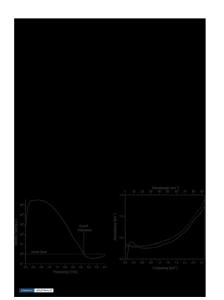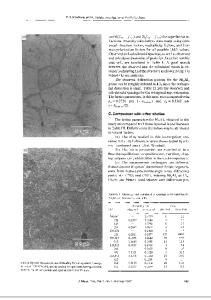Fabrication, structural, and spectroscopic investigation of Tb-doped Lu 3 Al 5 O 12 phosphor
- PDF / 1,336,362 Bytes
- 6 Pages / 612 x 792 pts (letter) Page_size
- 65 Downloads / 290 Views
A simple solution combustion synthesis technique was explored to produce Tb3+-doped Lu3Al5O12 (LuAG:Tb) phosphor with particle size in the range from about 25 to 900 nm by using glycine, urea, and the mixture of them as fuels. The effects of processing parameters such as type of fuel, fuel-to-oxidizer ratio and the composition of the complex fuel were studied. An increase in phosphor brightness and a decrease in crystallization temperature with increasing urea content in the fuel were observed. The integrated emission intensity ratio of the 5D3–7Fj transition to the 5D4–7Fj transition as a function of Tb concentration in LuAG was also investigated. It is very interesting that the growth process of the particles exhibited two steps when the content of urea in the complex fuel increased from 0 to 1.0. By tailoring the glycine-to-urea ratio in the fuel, an excellent fuel was found and high performance phosphors were obtained.
I. INTRODUCTION
In recent years, modern medical imaging technology has attracted more and more attention in the diagnostics and disease treatments or in studying the functionality of the human brain and overall nervous system.1 To enhance the detection sensitivity in x-ray imaging techniques to achieve less exposure of the patients to the hazardous radiation, new scintillation materials that produce high light yield and emit in the green–red spectral region are greatly needed.2 Thus, great interest has been given to Tb-activated phosphors for their high luminescence efficiency and special luminescence properties. On the other hand, much attention has been paid to host crystals with garnet structure, especially yttrium aluminum garnet (YAG), because of its relatively stable lattice structure and interesting optical properties. However, the low-density (low stopping power) and small Zeff (low x-ray absorption coefficient) exclude YAG from most practical applications in scintillation fields. Therefore it is necessary to look for candidates that have not only the excellent properties and the garnet structure, but also a relatively high density and large Zeff. One effective approach is to replace the Y3+-ion with other heavier trivalent metal ions.3 Naturally, it leads us to Lu3+, which possesses the highest density of all stable trivalent metal ions in the periodic table. Furthermore, the reported results that the x-ray absorption coefficient of LuAG:Ce is a)
Address all correspondence to this author. e-mail: [email protected] DOI: 10.1557/JMR.2005.0386
many times higher than that of YAG:Ce motivated us to study Tb-doped lutetium aluminum garnet (LuAG:Tb).4 As is well known, the luminescence properties of phosphors depend on the synthesis methods. Nowadays, a wide variety of methods have been used for the production of phosphors, such as solid-state reaction, coprecipitation, sol-gel, hydrothermal synthesis, and combustion methods.5–9 Combustion synthesis methods, especially the solution combustion method, have attracted considerable interest in the last two decades due to their unique combina
Data Loading...











